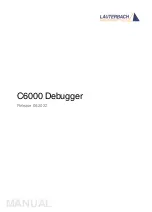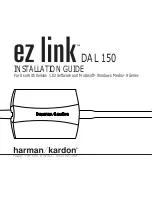
the horizon. Such a distortion, variable in nature, will also not be able to be
corrected by any fi xed setting. A telescope with this type of defect should be
submitted for repair.
Of course, there may also be a situation that is a combination of several problems
described above. Then, it will be all the more diffi
cult to separate the components
and determine a clear cause.
To fi nd out what you’re dealing with, it’s worthwhile for you to perform several
tests, including pointing the telescope at diff erent parts of the sky, tightening the
threads more or less fi rmly, and rotating the camera.
And this is what you should check fi rst: whether the tilt you are observing rotates
with the camera or not? If you rotate the camera 90 degrees relative to the
telescope and the tilt image is identical to the previous one - this means that the
tilt occurs in the camera or the accessory that rotated together with the camera.
However, if after rotation, the shape of the stars has qualitatively changed in the
corners of the frame - this means that the tilt is caused by any of the elements
that remained stationary, such as the telescope. This is an important distinction.
If your tilt rotates with the camera, you will be able to transfer the correction set
with the Tilt Corrector to a tilt plate or Astrodevice fi lter drawer and later use the
camera without the Tilt Corrector. If, on the other hand, the tilt stays in place
when the camera rotates (and so its image changes when the camera rotates),
then you will have to adjust the new tilt settings every time you change the angle
of rotation of the camera relative to the telescope.
You can also try to measure what actually (in millimeters) is the extent of the tilt
you want to correct. For this you need to have an electric focuser. To make the
measurement, focus the star in the center of the frame (use Bahtinov mask) and
record the position of the automatic foicuser. Remove the camera and insert a thin
shim of known thickness (e.g. 0.5 mm) in the optical path. Put the camera back
on and focus the star in the center again. Dividing the diff erence of the focuser
position by the thickness of the shim, you will get the number of steps per 1 mm
of distance in the optical path. You can take this measurements several times and
average the results for a more accurate result. Now remove the shim, again focus
the star in the center and again record the position of the focuser. Next, try to
- 28 -
Содержание TC 900
Страница 1: ...Tilt Corrector TC 900 User Manual rev 2022 11 09 ASTRODEVICE...
Страница 6: ...g 1 X X X X X 7 X R1 R2 S1 S2 S3 T1 T2 T3 B1 B2 B3 H1 H2 H3 H4 BS1 BS2 BS3 TS TS TS TS TS TS...
Страница 8: ...g 2 g 3 g 4 9...
Страница 10: ...11 g 5 g 6 g 7 11...
Страница 11: ...g 8 g 9 12...
Страница 13: ...g 10 g 11 14...
Страница 14: ...g 12 g 13 15...
Страница 15: ...g 14 g 15 3 mm 16...
Страница 17: ...g 16 g 17 18...
Страница 18: ...g 18 d m ax 70 m m h 5 m m g 19 19...
Страница 20: ...g 20 g 21 21...
Страница 21: ...g 22 g 23 22...
Страница 22: ...g 24 g 25 23...
Страница 30: ...g 30 S1 S2 S3 31...
Страница 33: ...g 31 g 32 34...
Страница 35: ...g 33 g 34 36 when you made the corrections with the Tilt Corrector...
Страница 36: ...g 35 1 2 3 4 5 6 g 36 37...
Страница 37: ...g 37 g 38 38...
Страница 39: ...g 39 g 40 40...
Страница 42: ...Copyright 2022 All Right Reserved Astrodevice is a registered trademark www astrodevice com...
















































